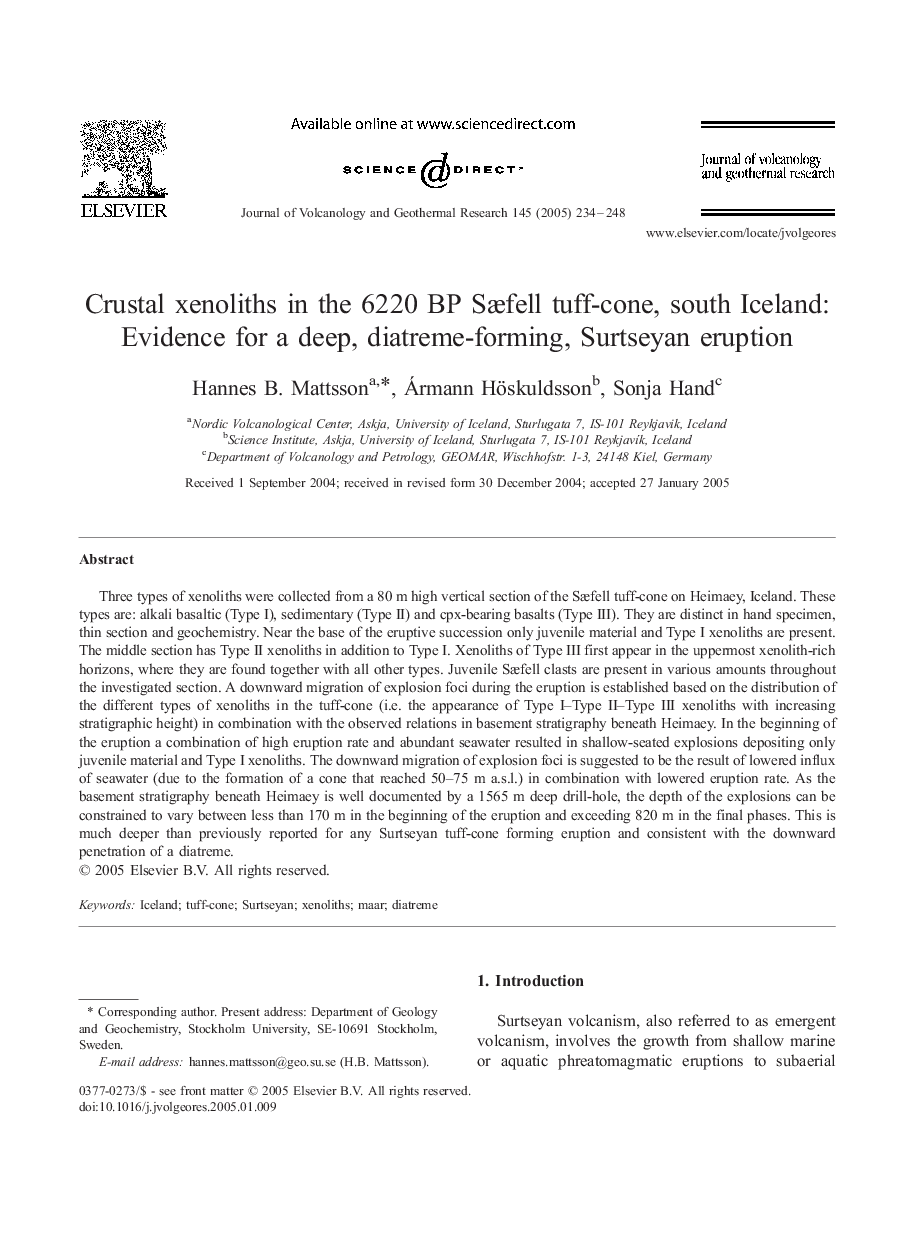| کد مقاله | کد نشریه | سال انتشار | مقاله انگلیسی | نسخه تمام متن |
|---|---|---|---|---|
| 9531665 | 1638493 | 2005 | 15 صفحه PDF | دانلود رایگان |
عنوان انگلیسی مقاله ISI
Crustal xenoliths in the 6220 BP Sæfell tuff-cone, south Iceland: Evidence for a deep, diatreme-forming, Surtseyan eruption
دانلود مقاله + سفارش ترجمه
دانلود مقاله ISI انگلیسی
رایگان برای ایرانیان
موضوعات مرتبط
مهندسی و علوم پایه
علوم زمین و سیارات
ژئوشیمی و پترولوژی
پیش نمایش صفحه اول مقاله

چکیده انگلیسی
Three types of xenoliths were collected from a 80 m high vertical section of the Sæfell tuff-cone on Heimaey, Iceland. These types are: alkali basaltic (Type I), sedimentary (Type II) and cpx-bearing basalts (Type III). They are distinct in hand specimen, thin section and geochemistry. Near the base of the eruptive succession only juvenile material and Type I xenoliths are present. The middle section has Type II xenoliths in addition to Type I. Xenoliths of Type III first appear in the uppermost xenolith-rich horizons, where they are found together with all other types. Juvenile Sæfell clasts are present in various amounts throughout the investigated section. A downward migration of explosion foci during the eruption is established based on the distribution of the different types of xenoliths in the tuff-cone (i.e. the appearance of Type I-Type II-Type III xenoliths with increasing stratigraphic height) in combination with the observed relations in basement stratigraphy beneath Heimaey. In the beginning of the eruption a combination of high eruption rate and abundant seawater resulted in shallow-seated explosions depositing only juvenile material and Type I xenoliths. The downward migration of explosion foci is suggested to be the result of lowered influx of seawater (due to the formation of a cone that reached 50-75 m a.s.l.) in combination with lowered eruption rate. As the basement stratigraphy beneath Heimaey is well documented by a 1565 m deep drill-hole, the depth of the explosions can be constrained to vary between less than 170 m in the beginning of the eruption and exceeding 820 m in the final phases. This is much deeper than previously reported for any Surtseyan tuff-cone forming eruption and consistent with the downward penetration of a diatreme.
ناشر
Database: Elsevier - ScienceDirect (ساینس دایرکت)
Journal: Journal of Volcanology and Geothermal Research - Volume 145, Issues 3â4, 30 July 2005, Pages 234-248
Journal: Journal of Volcanology and Geothermal Research - Volume 145, Issues 3â4, 30 July 2005, Pages 234-248
نویسندگان
Hannes B. Mattsson, Ármann Höskuldsson, Sonja Hand,